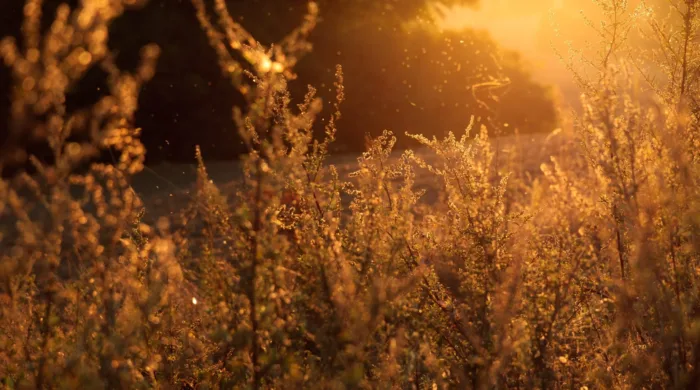Each year, as plants begin to release pollen at the arrival of spring, many of us play a guessing game to figure out whether or not our allergies have been activated or we simply have a cold. Couple that with the lingering dangers of COVID-19 and you may be thoroughly confused by your own symptoms.
In this post, we’ll help clarify the most common allergies in Washington state, offer ways to determine the difference between an allergy and a cold and provide tips on how you can manage and minimize allergy symptoms throughout Washington state’s allergy season.
Different Types of Allergies
Pollen is the biggest instigator of spring allergies, as its tiny grains are released into the air to fertilize other flora. If you’re allergic, your immune system will react with antibodies to attack the pollen, which produces histamines. When histamines get into the bloodstream, the result is itchy, watery eyes and a seemingly endless runny nose.
Tree pollen, specifically, is to blame for many who suffer through the allergy season in Seattle and across our state. The cedars, junipers, alders, willow, oak, evergreens and birch that provide so much shade and natural beauty in our area can also be significant triggers for those allergic, with their reproductive rituals underway. If you live or work near these trees, be aware that you may be more sensitive when outdoors in close proximity to them.
Grass pollen is another very common allergy trigger in the northwest. Unmowed lawns, which contain blades of grass that carry a feather-like flower at the top, can bring on the sneezes, as can dry, windy days, which carry the grass pollen through the air. There are also many types of grasses that are likely to spark allergic reactions. They include Bermuda, Rye, Orchard, Timothy, Johnson, Sweet Vernal and Redtop. Plus, seasonal foods such as oranges, melons and peaches that have proteins like those found in grass pollen, can leave mouths itching.
Weed pollen also causes many allergy triggers throughout the northwest, though many happen later in the year. The ones to watch out for in the spring include Russian-thistle, fireweed and Scotch broom.
Allergy vs. Cold: Which is it?
Though many symptoms can apply to both a cold and an allergy, such as sneezing and congestion, there are symptoms that can help you distinguish the difference.
For example, the following symptoms are all signs of spring allergies but don’t usually indicate the presence of a cold:
- Itchy, watery eyes
- Stuffy, itchy nose
- Sore throat that comes and goes vs. arrives and gets worse
- Swollen, red eyes
- Eczema
- Loss of taste and smell (note: this can also be a symptom of COVID-19)
Alternately, these symptoms are all indicators of colds, but not allergies:
- Fever
- Body aches
- Thick or green mucus when sneezing
Another way to help detect the difference is to document how long and how often the symptoms occur. Those that linger longer are more likely to be caused by colds than seasonal allergies; those that appear sporadically are more often seasonal allergies.
How to Manage and Minimize Allergy Symptoms
Avoiding the outdoors later in the day and into the evening when pollen is released can help minimize symptoms, as can keeping grass cut short and removing brush and weeds from your yard. You may also want to keep doors and windows sealed tight on days when pollen counts are high. This information can usually be found on weather apps or by watching the weather reports on local news programs.
Keeping a clean house, frequently vacuuming, replacing air filters regularly and using an air purifier can also help.
In addition, there are many over-the-counter naturopathic and traditional medicines that can help alleviate symptoms, such as decongestants, antihistamines, nasal sprays, eye drops, herbs, natural irrigation (with salt and baking soda) and ingesting honey native to the area in which you live. In some cases, the symptoms can be so severe that allergy shots or prescription medication becomes necessary. The best course of action is to be tested for allergies to know for sure what your triggers are, then have a medical professional develop a treatment plan for you to follow.
At Western Washington Medical Group, our Allergy Clinic can help with thorough allergy testing and develop plans for treatment once identified. Diagnosis entails a simple two-step process that covers 32 allergens specific to our region. A brief skin prick and a small injection is all it takes to get clear results, which will allow the doctor to formulate the best treatment plan possible for you.
Reach out today to request an appointment with our Allergy specialist.
